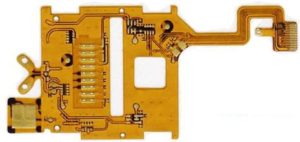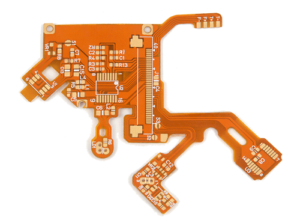How to produce FPC double-sided anti-oxidation board
- Select materials
This is one of the main factors affecting the production of FPC flexible boards, so the materials selected will affect the entire circuit board production process.
- Cutting and drilling
This is a step that every FPC board must go through. In addition to the manual cutting and drilling, many factories use laser cutting, which is mainly for the accuracy of FPC board products.
- Electroplating copper
This step is to plate the through hole, and the two layers of copper foil are drilled through the hole to metallize the hole, so that the upper and lower FPC soft plates can be turned on.
- Film, transfer line
This step is to be carried out in the darkroom (also called the exposure room), the line is printed on the film, then the photosensitive film is attached to the surface of the soft board that needs to be wired, and then the film is fixed with the film. The line on the top is transferred to the FPC board.
- Etching, inspection
This step is important in the steps that occur. Use a variety of different corrosive solutions to protect the area where the line is needed with a resist dry film, etch away unwanted areas, and then clean. The width of the etched line width must not exceed the tolerance given on the original data.
- Preliminary electrical test
If the line just etched is detected, if the line is short-circuited at this time, the timely stop will cause the cost loss not to be greater when the final test is performed.
- Sticker seal
This is a preliminary combination of the FPC board and the cover film. The FPC board and the cover film are pressed on the pad using a soldering iron. The FPC board and the cover film can be adhered together due to the thermosetting glue on the cover film.
- Press fit
This is a step that must be experienced in the production of FPC soft board. For a single-sided soft board, the FPC soft board and the cover film are pressed together, and the thermosetting glue is melted and bonded due to heating and pressurization. This pressing time depends on the structure of the FPC soft board.
- Baking
This step is a step in the curing of the FPC soft board. The baking temperature varies from tens of minutes to several hours. The oxidized circuit board is typically baked in an oven at a temperature of 150 ° C for one hour. This step also removes moisture from the FPC board.
- Silk screen
When the FPC board is produced, some basic information of the FPC board needs to be printed on the board. These characters include the FPC board type and the reserved part name of the pad. After that, it is baked to reinforce the combination of silkscreen characters.
- Antioxidant treatment
Also called metal surface protection treatment. Antioxidant is also called organic protective welding. Use chemical potion to soak the FPC board to be treated in the solution for about 5 minutes (depending on the concentration of the solution), you can apply the anti-oxidation layer to the FPC board. Above. After that, electrical inspection is required to see if there is damage to the line.
- Forming
This step is to attach the FPC soft board to the vacuum stage and then use the laser to engrave. This step is to accurately grasp the alignment of the die board of the flexible board.
- Final inspection
This step is the most inspected before the FPC soft board is shipped. It is a guarantee to prevent defective products from appearing in the hands of customers. If no defective products are detected in this link, the reliability of the products will be affected.
- Packaging
The processed circuit board is packaged and packaged using a vacuum machine, and it can be shipped.
Grace Zheng
Email: sales06@andwinpcb.com


